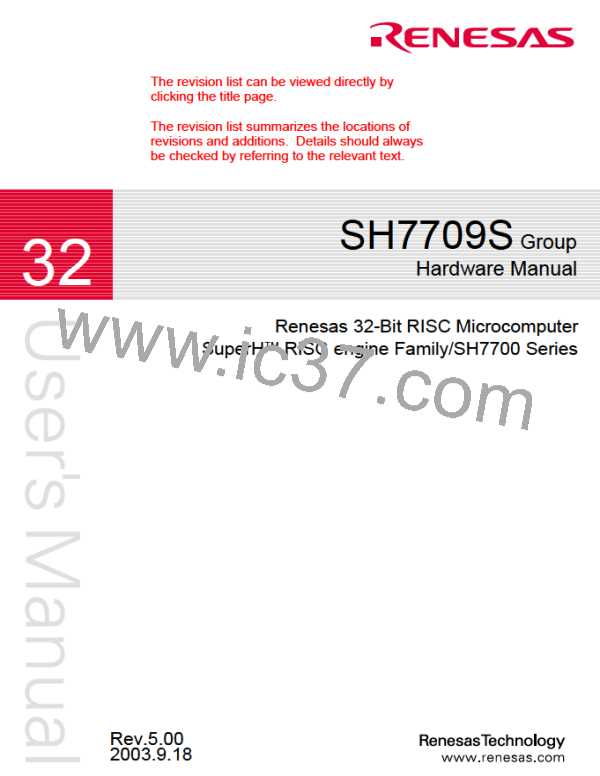Item
Features
Cache memory
•
•
•
•
•
•
•
•
•
16-kbyte cache, mixed instruction/data
256 entries, 4-way set associative, 16-byte block length
Write-back, write-through, LRU replacement algorithm
1-stage write-back buffer
Maximum 2 ways of the cache can be locked
23 external interrupt pins (NMI, IRQ5–IRQ0, PINT15 to PINT0)
On-chip peripheral interrupts: set priority levels for each module
2 break channels
Interrupt
controller (INTC)
User break
controller (UBC)
Addresses, data values, type of access, and data size can all be set as break
conditions
•
•
Supports a sequential break function
Bus state
controller (BSC)
Physical address space divided into six areas (area 0, areas 2 to 6), each a
maximum of 64 Mbytes, with the following features settable for each area:
Bus size (8, 16, or 32 bits)
Number of wait cycles (also supports a hardware wait function)
Setting the type of space enables direct connection to SRAM,
Synchronous DRAM, and burst ROM
Supports PCMCIA interface (2 channels)
Outputs chip select signal (CS0, CS2–CS6) for corresponding area
Synchronous DRAM refresh function
Programmable refresh interval
•
Support self-refresh mode
•
•
•
•
•
•
•
•
•
•
•
•
Synchronous DRAM burst access function
Usable as either big or little endian machine
E10A emulator support
User-debugging
Interface (UDI)
JTAG-compliant
Realtime branch address trace
1-kB on-chip RAM for fast emulation program execution
3-channel auto-reload-type 32-bit timer
Input capture function
Timer (TMU)
6 types of counter input clocks can be selected
Maximum resolution: 2 MHz
Realtime clock
(RTC)
Built-in clock, calendar functions, and alarm functions
On-chip 32-kHz crystal oscillator circuit with a maximum resolution (interrupt
cycle) of 1/256 second
Rev. 5.00, 09/03, page 3 of 760

 RENESAS [ RENESAS TECHNOLOGY CORP ]
RENESAS [ RENESAS TECHNOLOGY CORP ]